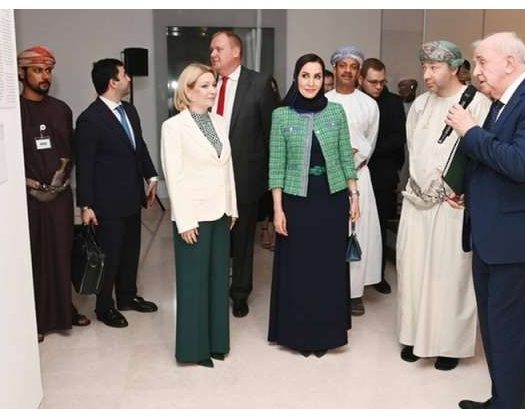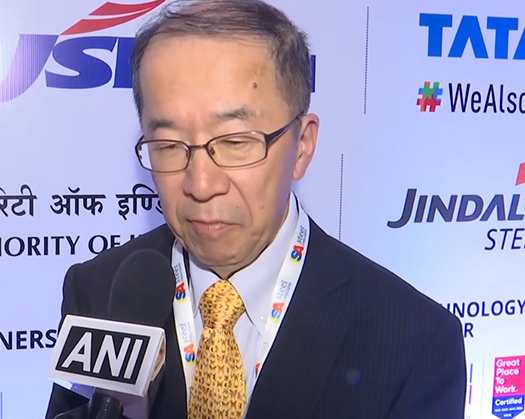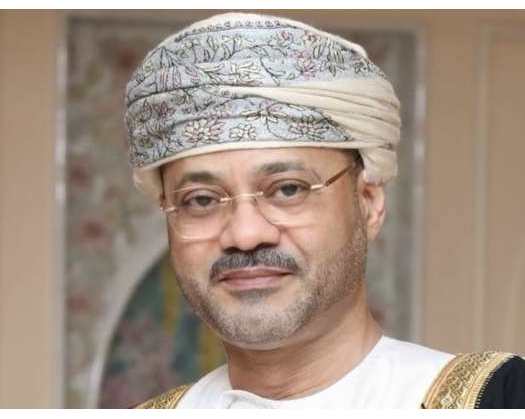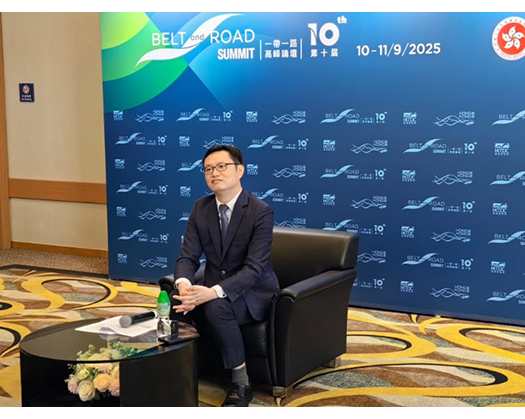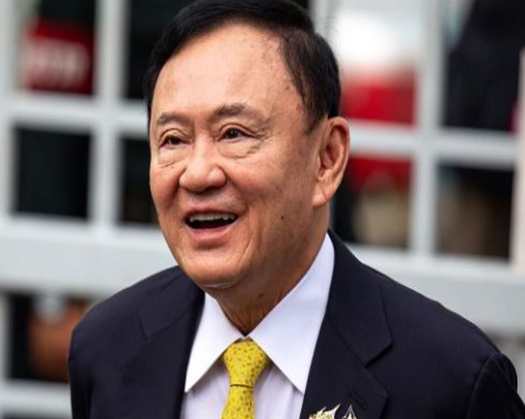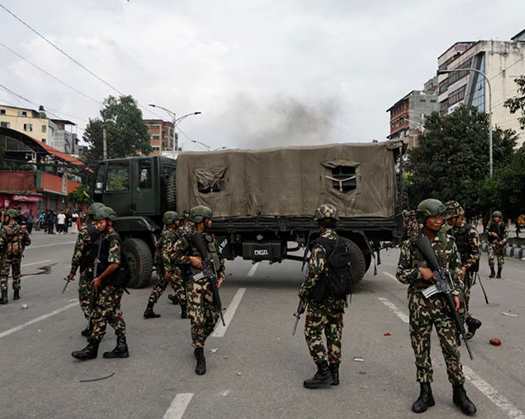Muscat: In celebration of the fortieth anniversary of diplomatic relations between the Sultanate of Oman and the Russian Federation, the National Museum hosted a press conference today to launch the "Russian Seasons" initiative in Oman.
This initiative is being organized in partnership with the Ministry of Culture of the Russian Federation and ANO "Russian Seasons."
Furthermore, the Museum unveiled a special exhibit from the State Hermitage Museum titled "Gifts of Bukharan and Central Asian Emirs to the Russian Imperial Court."
The event was graced by the presence of Olga Lyubimova, the Russian Minister of Culture, along with high-ranking officials, members of the media, and experts in culture and museums.
During the conference, Jamal Hassan Al Moosawi, Secretary-General of the National Museum, shared a timeline detailing the cultural and museum collaboration between the National Museum and the Russian Federation.
Olga Lyubimova emphasized the significant activities and events of the "Russian Seasons" that are scheduled to occur throughout the year in collaboration with various institutions in the Sultanate of Oman.
These events will encompass a range of cultural disciplines, including theater, music, and literature.
The Secretary-General of the National Museum conveyed his gratitude by stating: "Today marks the inauguration of the 'Russian Seasons' in the Sultanate of Oman, alongside the opening of the second exhibition, 'Gifts of Bukharan and Central Asian Emirs to the Russian Imperial Court,' at the National Museum, in collaboration with the State Hermitage Museum in Saint Petersburg. This occasion aims to promote cultural exchange and showcase the civilizational heritage of both nations, which have shared historical ties for centuries and are dedicated to further strengthening these connections. This event also coincides with the celebration of the 40th anniversary of diplomatic relations between the Sultanate of Oman and the Russian Federation. This initiative is part of a larger strategy to enhance cultural diplomacy, with the National Museum serving as a vital institution that represents Oman's historical and cultural aspects, actively engaging in partnerships with Russian cultural and museum organizations, particularly the Russian Ministry of Culture."
He further remarked: "This exhibition represents our second collaboration, following the success of the earlier exhibition that highlighted masterpieces of Islamic civilization in Russia. The current exhibition aligns with the ongoing 'Oman Gallery' exhibition at the State Hermitage Museum, titled 'The Omani Empire Between Asia and Africa.' This concurrent exhibition, which will run until 16 February 2025, emphasizes the Omani Empire's significance in Asia and Africa, showcasing Oman’s historical role as a cultural and economic link between the Arabian Peninsula, West Asia, and the East African coast."
The Minister of Culture of the Russian Federation emphasized that hosting the primary international Russian initiative during the year marking the 40th anniversary of diplomatic relations between Russia and Oman represents a crucial advancement in enhancing cultural collaboration between the two nations. She noted that while various cultural sectors are rapidly evolving, museums continue to serve as the "flagships" of this partnership. The enduring friendship between Russia and Oman is rooted in their shared commitment to preserving cultural and historical heritage, traditional values, and the spiritual richness of their peoples.
She also highlighted the significance of inaugurating the "Russian Seasons" in Oman with a museum project, specifically the unveiling of the State Hermitage's Corner at the National Museum of Oman. This exhibition showcases the deep historical connections between Russia and Eastern cultures, featuring unique gifts from Eastern rulers to the Russian imperial court. She expressed hope that the "Russian Seasons" and the opportunity to engage with exemplary Russian art would leave lasting and vivid impressions on both residents and visitors of Oman.
The exhibition titled "Gifts from Bukharan and Central Asian Emirs to the Russian Imperial Court" is part of an initiative by the State Hermitage Museum that began in 2021. This second exhibition presents a remarkable collection of exquisite artifacts from Bukhara, Khiva, Khwarazm, and Kokand, which are being lent to the National Museum in Oman as part of a long-term agreement with the State Hermitage Museum in Saint Petersburg, Russia. The State Hermitage Museum, established as an Imperial museum, boasts a significant array of artifacts that were diplomatic gifts to the Russian Tsars from Central Asian Emirates, including Bukhara, Khiva, and Kokand.
The assortment of gifts from the Emirs of Bukhara and Khiva, which were sent to Saint Petersburg during the era of the Russian Empire, features an intriguing array of items including weapons, horse gear, personal adornments and gemstone-studded jewelry, silver artifacts, carpets, tapestries, as well as textiles and embroideries.
In accordance with diplomatic customs, official visits typically involved a reciprocal exchange of gifts. Among the prominent visitors were the Bukharan Emirs, such as Sayyid Abd al-Ahad Khan (reigned 1885–1910 CE) and Sayyid Mir Alim Khan (reigned 1911–1920 CE), along with the Khans of Khiva, including Muhammad Rahim Khan (reigned 1864–1910 CE) and Isfandiyar Khan (reigned 1910–1918 CE).
The artifacts showcased in this exhibition were gifted by the leaders of Khiva and Bukhara, along with their delegations, to the last two Russian Emperors, Alexander III (1881–1894 CE) and Nicholas II (1894–1917 CE). This esteemed collection reflects high social status and highlights the traditional decorative methods and unique artistic styles prevalent in Central Asian jewelry and weaponry during the late 19th and early 20th centuries.
The event also included a live performance by the Russian Berlin Quartet, followed by a screening of the documentary "al-Khanjar," produced by Russia Today Arabic (RT) in collaboration with the National Museum and the Ministry of Information in the Sultanate of Oman. The film explores the diverse styles of Omani khanjars found in various regions of the Sultanate and narrates the story of a notable khanjar belonging to Sultan Hamoud bin Mohammed al-Busaidi, Sultan of Zanzibar (1896–1902). This exceptional khanjar has been loaned from the National Museum in Muscat to the State Hermitage Museum in Saint Petersburg and is currently featured in the "Oman Gallery" exhibition at the esteemed Russian Museum.
The "Russian Seasons" initiative is an international cultural endeavor supported by the Government of the Russian Federation and the Ministry of Culture. Its primary goal is to showcase Russian culture on a global stage, highlighting the nation's commitment to preserving and nurturing its rich cultural heritage and traditions. The program encompasses a wide array of themes and formats, including classical music concerts, theatrical performances, film festivals, art exhibitions, educational initiatives, lectures, and master classes. Since its inception, Russian Seasons has attracted over 13 million attendees.
The concept of Russian Seasons originated over a century ago, in 1908, when the renowned artist Sergei Diaghilev began organizing performances featuring Russian opera and ballet stars across Europe and America, along with exhibitions of fine arts.
In addition, the State Hermitage Museum in Saint Petersburg stands as one of the largest museums worldwide, boasting a collection of more than three million artifacts. Founded in 1764, it is not only one of the oldest museums but also a significant tourist attraction in Russia.
The museum is celebrated for its expansive complex, which includes the historically significant Winter Palace. Its collection reflects a wide range of cultures, showcasing artworks from Eastern Europe, Russia, Ancient Greece and Rome, the Near and Far East, and Central Asia. Furthermore, it features an extensive numismatic collection that spans from antiquity to modern times, as well as an array of weapons from Western Europe, the Middle East, and Russia, alongside numerous archaeological finds.
The museum attracts around 5.3 million visitors annually. It features 500 exhibition galleries that showcase over 17,000 paintings, 12,000 sculptures, more than 1 million coins and medals, 800,000 archaeological artifacts, and over 360,000 applied arts items. Furthermore, the museum possesses a collection of more than 600,000 graphic art pieces, establishing it as one of the most important cultural institutions globally.

